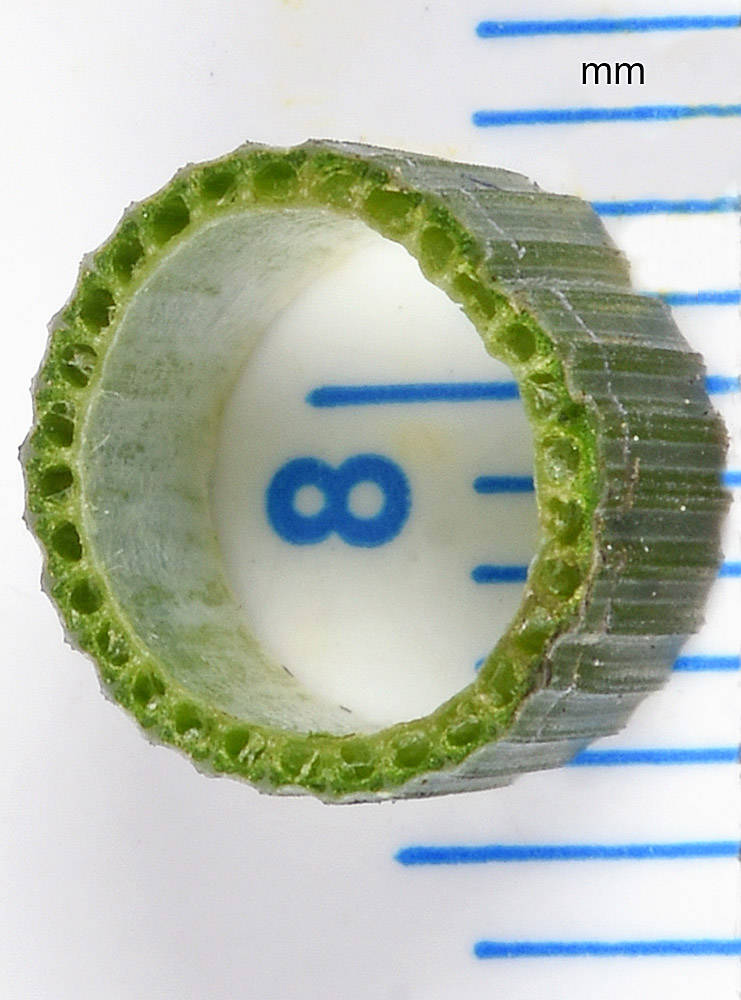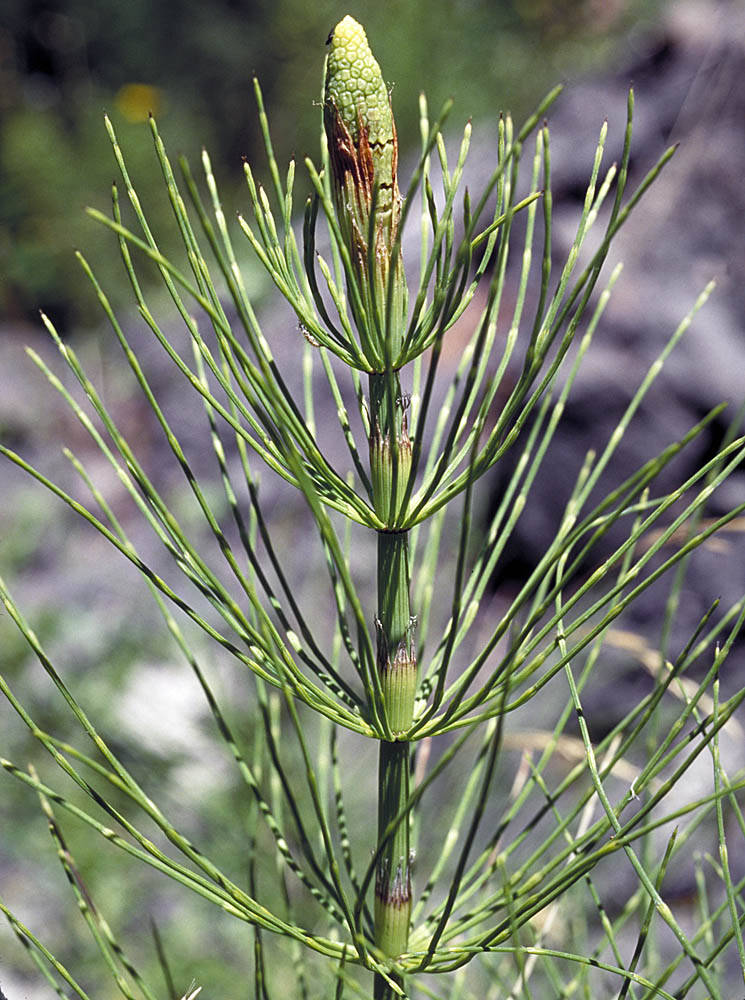Equisetum hyemale
Equisetum arvense
scouring rush
common horsetail
nearly square; up to 5 × 6 mm (rarely larger);
teeth up to 3 mm; dark; firm-textured, persistent, with simple midribs continuous with the stem ribs; free or united in pairs.
annual, dimorphic, green or lacking chlorophyll and stomata;
vegetative stems erect and bushy; up to 40 cm or semidecumbent; the stem apex extended into a long narrow branchless tip; up to 14 prominent ribs lacking a furrow; central cavity 33–67% of the stem diameter.
shorter than the vegetative stems, unbranched, pale brown, lacking chlorophyll and stomata; and with larger sheaths, produced in spring before the vegetative stems.
simple, whorled; solid, sharply 3(4)-angled; branch bases dark; first internode distinctly longer than its subtending sheath.
exserted from last sheath when mature, green stem usually lacking cones.
=216.
Equisetum hyemale
Equisetum arvense
Moist to dry open places, grasslands, meadows, disturbed sites, along roads; 0–2600 m. BR, BW, Casc, CR, ECas, Est, Owy, Sisk, WV. CA, ID, NV, WA; throughout North America; Eurasia. Native.
For identification hints for plants with fertile, green stems, see comments under E. palustre.
Duncan Thomas
- Local floras:
BC,
OR,
WA
- Local Web sites:
Flora NW,
PNW Herbaria
WildflowerSearch
iNaturalist (observations)
USDA Plants Database
- LBJ Wildflower Center
- SEINet
- Plants of the World Online
- Encyclopedia of Life
- Wikipedia
- Google Image Search
- Local floras:
BC,
CA,
OR,
WA
- Local Web sites:
CalFlora,
CalPhotos,
Flora NW,
PNW Herbaria
WildflowerSearch
iNaturalist (observations)
USDA Plants Database
- LBJ Wildflower Center
- SEINet
- Plants of the World Online
- Encyclopedia of Life
- Wikipedia
- Google Image Search





